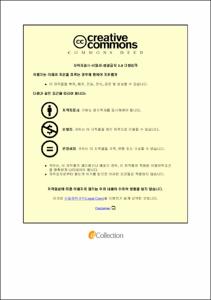체외 막 산소요법을 시행한 환자에서 체외 막 산소요법 연관 합병증이 병원 내 사망률에 미치는 영향
- Abstract
- Abstract
Objective: To assess the predictors of extracorporeal membrane oxygenation (ECMO)-related vascular and cerebrovascular complications among adult patients and to test the hypothesis that ECMO-related complications are associated with higher in-hospital mortality rates.
Summary Background Data: Although ECMO is a well-established treatment for supporting severe cardiopulmonary failure, the morbidity and mortality of patients requiring ECMO support remain high. Evaluating and correcting potential risk factors associated with any ECMO-related complications may improve care and decrease mortality.
Methods: This single-center, retrospective study included 856 ECMOs administered via cannulation of the femoral vessels of 769 patients: venoarterial (VA) ECMO (n = 709, 82.8%) and venovenous (VV) ECMO (n = 147, 17.2%). The study outcomes included the occurrence of ECMO-related vascular and cerebrovascular complications and in-hospital death. The association of ECMO-related complications with the risk of in-hospital death was analyzed.
Results: The incidences of ECMO-related vascular and cerebrovascular complications were 20.2% and 13.6%, respectively. The overall in-hospital mortality rate was 48.7%: 52.8% among VA ECMOs and 29.3% among VV ECMOs. Multivariable analysis indicated that age (P < 0.01), cardiopulmonary cerebral resuscitation (P < 0.01), continuous renal replacement therapy (P < 0.01), and initial platelet count [< 50 × 103/µL (P = 0.02) and 50–100 × 103/µL (P < 0.01)] were associated with an increased risk of in-hospital death. ECMO-related vascular and cerebrovascular complications were not independently associated with higher in-hospital mortality rates among either VA or VV ECMOs.
Conclusions: ECMO-related vascular and cerebrovascular complications were not associated with an increased risk of in-hospital death among adult patients.
ABBREVIATIONS AND ACRONYMS
AVF = arteriovenous fistula; CPCR = cardiopulmonary cerebral resuscitation; CKD = chronic kidney disease; CT = computed tomography; CRRT = continuous renal replacement therapy; CAD = coronary artery disease; DVT = deep venous thrombosis; ECLS = extracorporeal life support; ECMO = extracorporeal membrane oxygenation; ECPR = extracorporeal cardiopulmonary resuscitation; Hb = hemoglobin; MCS = mechanical circulatory support; PAOD = peripheral arterial occlusive disease; PLT = platelet; VA = venoarterial; VV = venovenous
|배경
체외 막 산소공급장치(ECMO)를 시행 받는 환자에서 치명률과 이환률은 지속적으로 높은 상태이다. ECMO 연관 혈관, 뇌혈관 합병증의 위험인자를 알아내고, 교정한다면, 치료의 질을 올리고, 연관 사망률을 줄일 수 있을 것이다.
목적
ECMO를 시행 받은 환자에서, ECMO와 연관된 혈관, 뇌혈관 합병증의 예측인자를 평가하고, ECMO 연관 합병증이 해당 환자들의 병원내 사망률의 증가와 연관이 있는지 확인하기 위해 본 연구를 진행하게 되었다.
방법
2015년 1월부터 2019년 12월까지, 769명의 환자에서 856건의 대퇴동맥을 통한 ECMO가 시행되었고, 정맥-동맥간 체외 막 산소화요법 (VA ECMO), 정맥-정맥간 체외 막 산소화요법 (VV ECMO)으로 분류하여 후향적으로 분석하였다. 결과로 병원내 사망률, ECMO연관 혈관 합병증의 발생률, 뇌혈관 합병증의 발생률을 조사하였고, 이러한 합병증 발생률과 병원내 사망률과의 연관 관계를 분석하였다.
결과
ECMO 연관 혈관/뇌혈관 합병증의 발생률은 각각 20.2%, 13.6%였다. 전체 연구대상자에서 사망률은 48.7%였고, VA ECMO를 시행한 환자에서 52.8%, VV ECMO를 시행한 환자에서 29.3% 였다. 다변량분석 결과, 고령의 나이 (p<0.01), 심폐소생술 시행 (p<0.01), 지속적 신대체요법 시행 (p<0.01), 낮은 초기 혈소판 수치 [< 50 × 103/µL (P=0.02), 50–100 × 103/µL (P<0.01)] 가 병원 내 사망률을 높이는 것으로 나타났다. ECMO 연관 혈관/뇌혈관 합병증은 VA ECMO, VV ECMO 모두에서 병원 내 사망률과 연관이 없었다.
결론
ECMO를 시행한 환자에서, ECMO관련 혈관/뇌혈관 합병증은 병원내 사망률 증가와 연관이 없다.
- Issued Date
- 2022
- Awarded Date
- 2022-02
- Type
- dissertation
- Alternative Author(s)
- LEE SANG AH
- Affiliation
- 울산대학교
- Department
- 일반대학원 의학과의학전공
- Advisor
- 조용필
- Degree
- Master
- Publisher
- 울산대학교 일반대학원 의학과의학전공
- Language
- eng
- Rights
- 울산대학교 논문은 저작권에 의해 보호 받습니다.
- Appears in Collections:
- Medicine > 1. Theses (Master)
- 파일 목록
-
-
Download
 200000601119.pdf
기타 데이터 / 452.48 kB / Adobe PDF
200000601119.pdf
기타 데이터 / 452.48 kB / Adobe PDF
-
Items in Repository are protected by copyright, with all rights reserved, unless otherwise indicated.